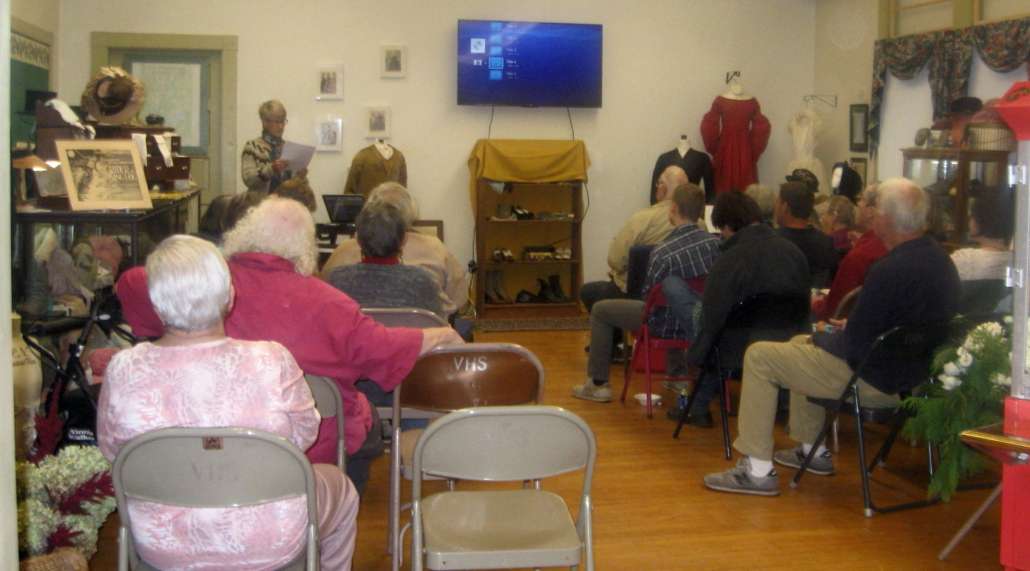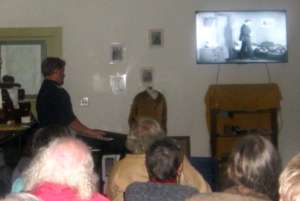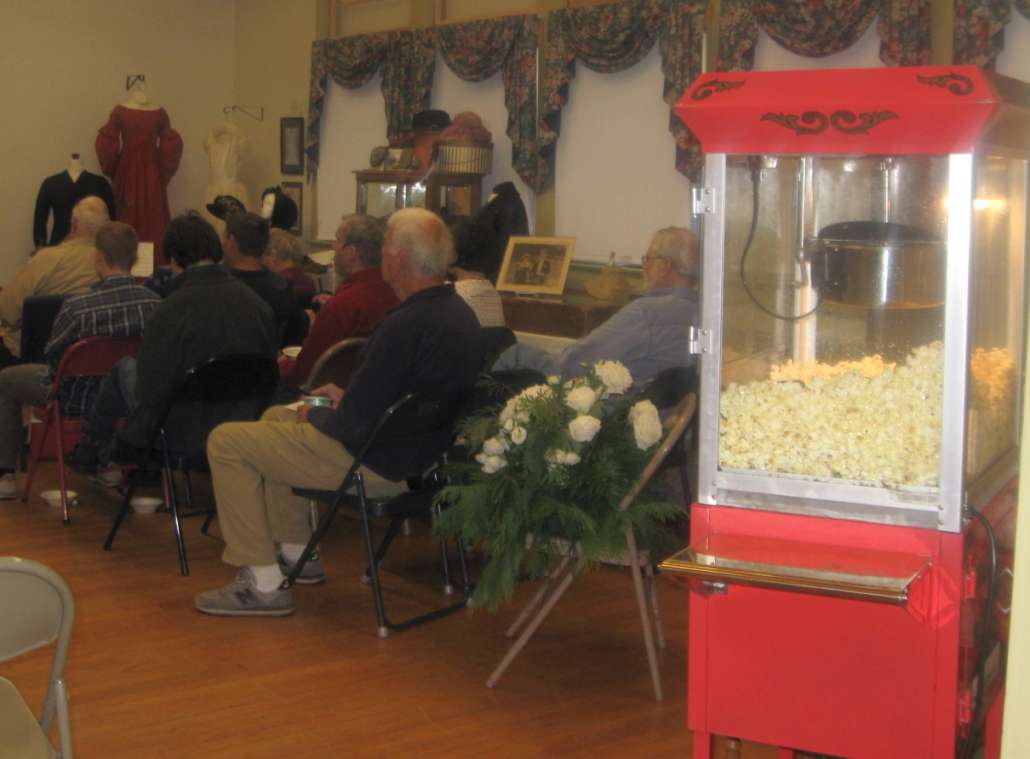An afternoon of viewing a slice of the ‘Roaring ‘20s’

The audience takes a trip to the past with silent films at the Vassalboro Historical Society. (photo by Roberta Barnes)
by Roberta Barnes
Sunday October 15, 2023, the Vassalboro Historical Society opened a window into the past by showing silent films written and produced by Holman F. Day, a native of Vassalboro.
These black and white silent windows into the past remind us of the importance of body language, musical sounds, and even tapping of the foot. While in silent films we cannot hear what is spoken, the actions and body language of the characters speak in a language sometimes overlooked.
Another important part of silent films, just as in films today, was always the piano or organ music. At one time I spoke to an older woman who had watched silent movies in theaters and said how there was always a piano player. It is the music that tells you if a person is joyfully running to something or fearfully running from something. Sunday in Vassalboro Joel Estes, a music teacher from Temple Academy, in Waterville, with his electric keyboard provided the perfect sound background that enhanced the actors’ actions.
Prior to showing the first silent film, Suzanne Griffiths presented the history of Holman F. Day, born in Vassalboro 1865. Griffiths covered his career as a newspaper man, journalist, novelist, poet, and filmmaker. While she spoke, the society’s president Janice Clowes, and others set up the popcorn maker and made certain there was enough coffee and bottled water for film viewers.
David Theriault explained differences to expect between black and white silent films of yesterday, and today’s movies filled with special effects. Any needed dialogue and background story appears written in full screen rather than in captions as we see in today’s films. Once people sat down with popcorn the lights were turned off, and the score or music introduced the film Knight of the Pines. This silent comedy filmed in the cold around Augusta, Maine, in 1920 was produced by Holman Day Film Company.
Following a short intermission, more popcorn and Kent London speaking about Day’s life, the lights were again turned off. Music introduced the 1921 silent film Brother of the Bear. Written by Day, this film introduces a tame bear adopted by a man living in a shack in the forest. Between the body language of those not knowing the bear had been trained, and the keyboard sounds, spoken words are not required to know what is happening in the film.
The afternoon of delights from the 1920s ended with the silent film, My Lady O’ the Pines. It revolves around Norah Collison, a young woman who owns a huge timberland in Maine, full of white pines. Collison is played by Mary Astor, who later became one of Hollywood’s big stars.
The afternoon of visiting a part of our past closed with a raffle of several donated arrangements of white roses.
Roberta Barnes is a freelance contributor to The Town Line.
Responsible journalism is hard work!
It is also expensive!
If you enjoy reading The Town Line and the good news we bring you each week, would you consider a donation to help us continue the work we’re doing?
The Town Line is a 501(c)(3) nonprofit private foundation, and all donations are tax deductible under the Internal Revenue Service code.
To help, please visit our online donation page or mail a check payable to The Town Line, PO Box 89, South China, ME 04358. Your contribution is appreciated!




Leave a Reply
Want to join the discussion?Feel free to contribute!